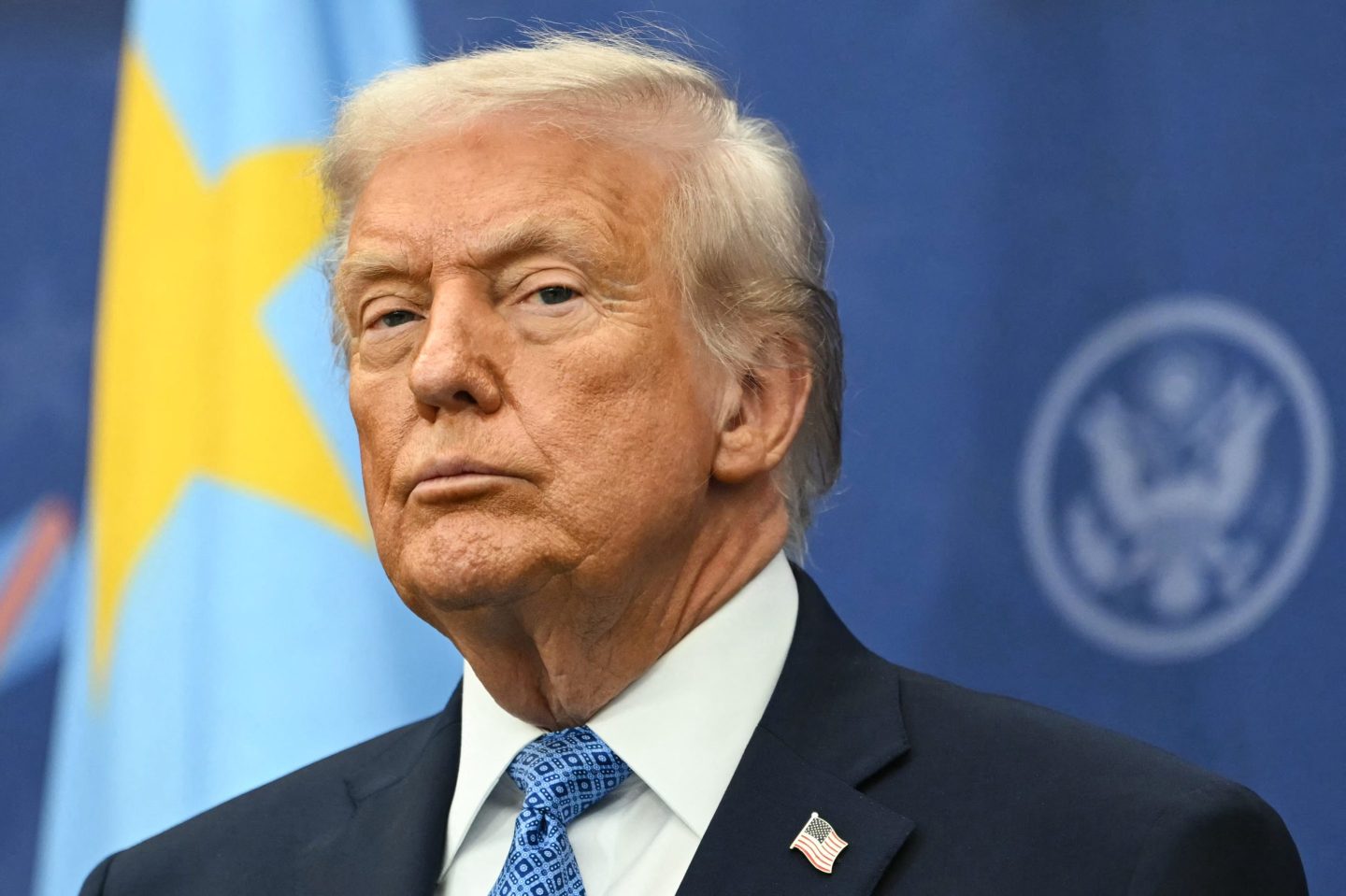- Tariffs on Mexico and Canada were put on hold for a month, but those on China were not—and according to Goldman Sachs, “large tariffs pose downside risk to our S&P 500 earnings estimates and return expectations.”
President Donald Trump threatened tariffs on Mexico, Canada, and China, but an 11th-hour deal pressed pause for North American trade partners. Levies on China, however, are still happening, and the country has retaliated in kind.
But the world is not out of the woods where Trump’s tariffs are concerned: Taxes on Mexico and Canada could be back in play in a month’s time, and Trump has also flirted with taxes on the European Union and United Kingdom. And according to Goldman Sachs, these tariffs could hurt stocks and earnings.
“Large tariffs pose downside risk to our S&P 500 earnings estimates and return expectations,” Goldman Sachs chief U.S. equity strategist David Kostin and a team of analysts for the investment bank wrote in a research note dated Feb. 2. Their thought process is: Companies absorbing the higher input costs resulting from tariffs would squeeze margins and hit profits. If companies pass the higher costs on to their customers, well, sales might suffer.
Therefore, Goldman Sachs estimates that every five-percentage-point increase in the United States tariff rate would lessen the S&P 500 earnings per share by about 1% to 2%. If the planned tariffs then become a reality, the bank said, it would reduce its S&P 500 earnings-per-share forecasts by roughly 2% to 3%. There is a caveat: The estimate is “not taking into account any additional impact from major financial conditions tightening or a larger-than-expected effect of policy uncertainty on corporate or consumer behavior,” the analysts explained.
Still, the S&P 500 is a market-capitalization-weighted index of 500 large publicly traded companies in the United States. So a 2% hit to the earnings of the companies represented in the index is notable for corporate profits and investors in simple terms. Plus, investors pay attention to earnings per share, or EPS, more than any other metric because it shows stock value.
Trump slapped 10% tariffs on China, so China placed 15% tariffs on American coal and natural gas and 10% on oil. To stave off what would have been 25% tariffs on Mexico and Canada (with a carve-out for Canadian energy resources), Mexican President Claudia Sheinbaum made a deal with Trump to hinder the flow of fentanyl by sending 10,000 troops to the border—and Canadian Prime Minister Justin Trudeau made a deal to implement its $1.3 billion border plan, again to thwart the flow of fentanyl. Canada and Mexico have 30 days to secure a permanent deal with Trump before he moves ahead with his tariffs plan for both countries.
Goldman Sachs economics research previously estimated a sustained 25% tariff on imports from Mexico and Canada would result in a 0.7% increase in core PCE prices, or personal consumption expenditures, which measures the prices people pay for goods and services. It happens to be the preferred inflation measure for the Federal Reserve. The bank estimated a resulting 0.4% hit to GDP as well. Gross domestic product measures economic activity. In 2024, GDP increased by 2.8%, so imagine a 0.4% blow to that.
But before the U-turn on tariffs, Goldman Sachs said its economists “describe the outlook as unclear but believe there is a substantial probability that the tariffs on Canada and Mexico will be temporary.”











